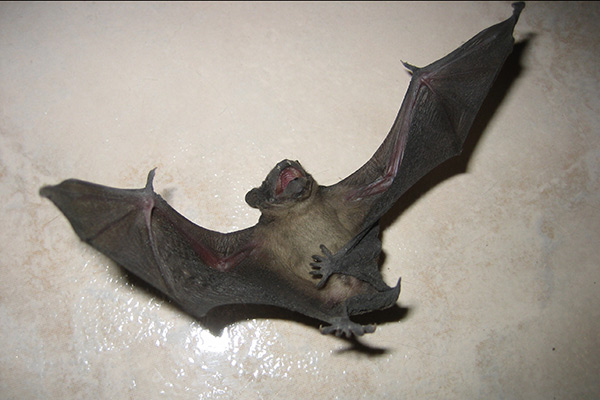- info@animalatticpest.com
- Call - we service 300 locations

Bat Nest in Attic - Nest of Baby Bats
Bats don't really have a nest. Each female bat gives birth to just one baby. They cluster in the attic, and the mother knows where to find her own. Yes, if you have a bat infestation, or even just what you think are a few bats in your attic, there are young. That's the reason bats enter the attic. These bats can live in very large groups, called maternity colonies. The bats in your attic are all females. They give birth to one pup each, usually in the month of May, but it can vary depending on species or local climate. The pups in the attic are flightless during the summer months, while the females nurse them. This is called the maternity season, and you absolutely cannot perform a bat exclusion during this time, because you will trap the young baby bats inside! It's illegal, and a terrible event, because the baby bats start to crawl around and they often get inside the house, or they starve and die and rot and cause a bit odor problem. It's a horrible thing to kill baby bats!
Bat Nest in Attic - Nest of Baby Bats

A Baby Bat
Without its mother to feed it milk, it will not survive.

Bats are Cute!
At least I think so. Please treat them with respect!
Information About Nest of Baby Bats in the Attic
Bats don't live in a nest. A mother bat has just one baby. Baby bats cling to their mother for the first few months of life, until they can fly on their own. While the mother is out foraging at night, they cling to the ceiling or just crawl in crevices or on the walls. They do make some chirping sounds, not much different than the adults to our ears. Read about What does a group of bats in your house sound like?
What do wildlife rehabilitators do with baby bats? There are many places out there that offer care and assistance to wild animals that have been injured or become sick. These wildlife rehabilitators have worked for years in helping animals, not only in giving them care for when they are injured, but also in helping them to find a home. They have cared for many different kinds of animals, including raccoons, squirrels, birds, and possums, among others.
Most often a person finds a sick or injured animal and brings it to the wildlife rehabilitation center to be cared for. The animal is looked at by a veterinarian, and the proper course of care is provided until the animal is healthy enough to be able to survive on its own. In many cases the animal is taken to a suitable place and released back into the wild but, at times, it may remain at the wildlife refuge for an extended time, as a kind of pet of the place. This is what makes these places so special. It is clear that they really care.
While these mercy pet hospitals are a great place for an animal to get care, the reality is that not every wild animal is welcome there. Some these refuges will not care for because the animal is so dangerous or is of such a commonality that they cannot their valuable care on. This is the case of the bat.
While this is not always true, most often bats do not receive care from wildlife rehabilitators. They are often such vicious animals and can live in such hugely populated colonies that there simply is no reason to provide this kind of care for them. One or two bats that die is going to do little or nothing to the ecosystem and so they may be allowed to die. At best they will be given something to make this a lot less painful process and then that will be the end.
Bats carry many diseases, meaning that they are not only a danger to other animals, including humans, where they live, but also are a danger to the rehabilitators themselves. Because a bat feces in particular is very dangerous to inhale it is often safer to keep the center and its workers as safe as possible. This can best be accomplished by letting the animal die in as humane a way as possible. Some people worry about bat bugs. Read about: Bat Bugs: Risks and Removal
There are some species of bats that are decreasing in numbers, and so some centers, especially those in the southwest, are taking in these bats to keep the species viable.
Also read about:
Bat Hibernation: When, Where, How Long?
